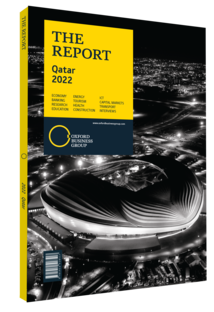Qatari retail sector adopts multi-channel future
Qatari retailers that have weathered the Covid-19 pandemic are shifting to a blended, multichannel distribution strategy. Such a strategy involves expanding a company’s digital offerings, while at the same time maintaining a brick-and-mortar presence at an attractive location. The pandemic gave rise to a significant uptick in online shopping, a trend especially apparent when physical retail branches were closed due to lockdown measures.
Digital Drive
When non-essential stores were shuttered at the outset of the pandemic, the authorities moved quickly to facilitate the expansion of digital options. For example, the Qatar Central Bank launched its Qatar Mobile Payment System, which uses QR codes to allow consumers to make payments through their smartphones. This was facilitated by an existing predisposition to using digital tools among the population. “It is imperative to accelerate digital transformation strategies in retail to reflect the fast-changing aspirations of customers and exceed their expectations,” Bader Al Darwish, chairman and managing director of Darwish Holding, told OBG.
Local retailers – which may have lacked the capacity, innovation or know-how to scale up their digital platforms prior to the pandemic – had to adapt, and many partnered with major e-commerce platforms and delivery companies. One entity that leveraged the increase in digital shopping was EB utler, which has helped a range of businesses adopt a multichannel approach to providing goods and services.
“The future of traditional retail players will be multichannel in terms of reach,” Mohamed Althaf, director of LuLu Group International, told OBG. “While there was certainly an increase in e-commerce for groceries during the pandemic, numbers are now returning to the pre-pandemic average. In part, this is because consumers still value the touch-and-feel experience of brick-and-mortar stores, even while some have maintained a preference for e-commerce.”
Indeed, a February 2021 report from international consultancy KPMG noted that stores now need to be adept in areas such as online fulfilment, data analytics and process automation. Another consequence of the pandemic is that retailers are increasingly seeking to differentiate themselves through value addition. Whether this is by way of promoting corporate social responsibility, for example, or the quality of the on- and offline shopping experience, retailers are focusing more than on solely providing goods.
Technologies can also be used to help boost sustainability across the supply chain, a factor that is increasingly important to consumers. “Sustainability, particularly through the application of circular-economy principles in product design and shopping processes, should be the central thrust for innovation in food retail,” Althaf told OBG. “Artificial intelligence and big data have proven to have less disruptive potential than previously expected. Rather, an increased reliance on the just-in-time model has proved detrimental to the supply chain.”
Expanded Offering
The retail scene in Qatar is notable for its prevalence of large malls: super-regional malls – or those with over 74,000 sq metres of gross leasable area (GLA) and three or more anchors – accounted for over half of total GLA as of April 2021. This has heightened the need to drive a return to offline shopping. “In the GCC malls are a central cultural and social component of the community,” Emile Sarkis, general manager of Mall of Qatar, told OBG. “As a result, there is a strong case for shaping the retail environment so that offline and online channels coexist in a mutually reinforcing way.”
There was already a trend prior to the pandemic towards introducing new food and beverage concepts, as well as entertainment options for both kids and adults to draw more footfall to shopping centres. In line with the broader drive to enrich the offline shopping experience, this strategy is set to continue.
You have reached the limit of premium articles you can view for free.
Choose from the options below to purchase print or digital editions of our Reports. You can also purchase a website subscription giving you unlimited access to all of our Reports online for 12 months.
If you have already purchased this Report or have a website subscription, please login to continue.

